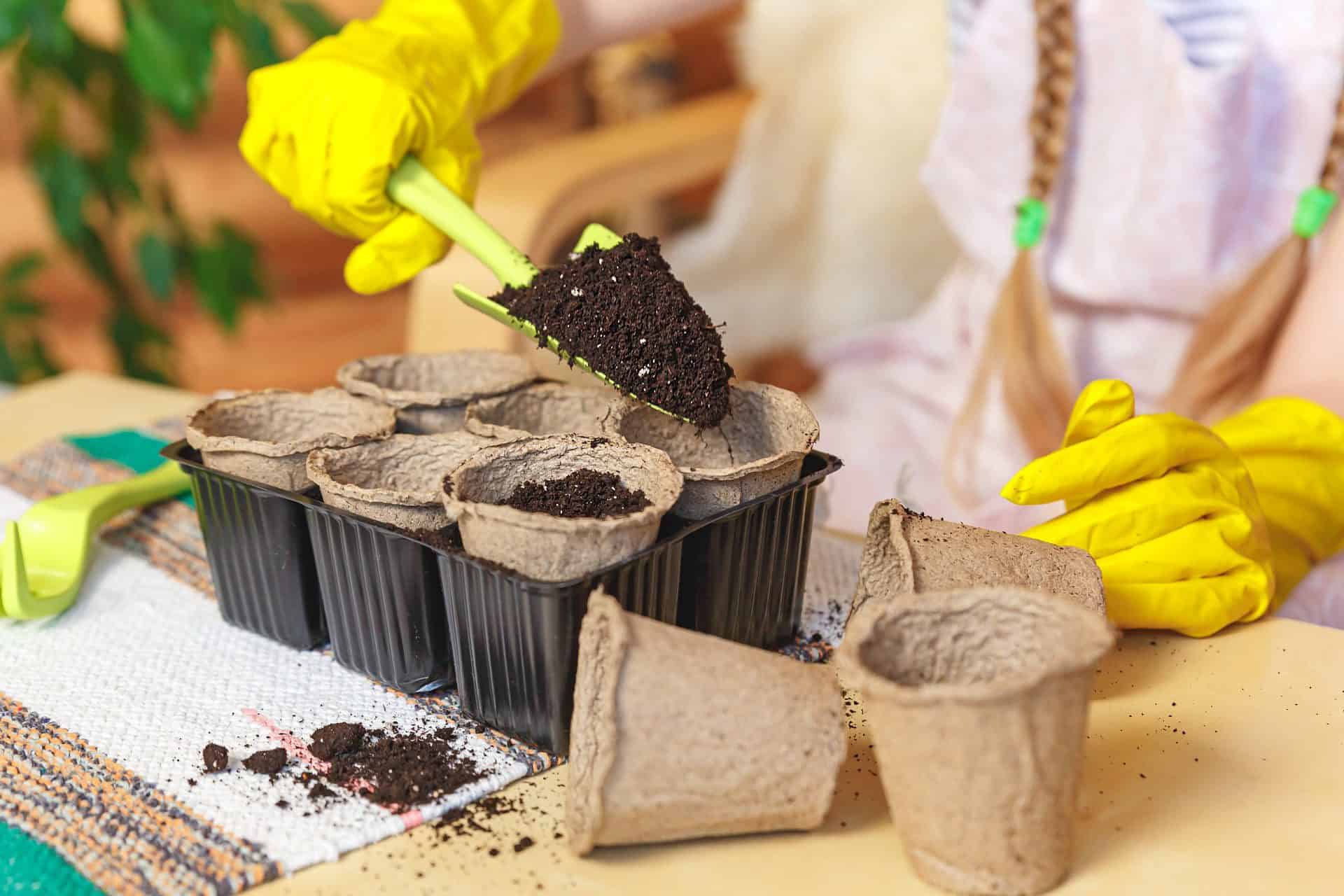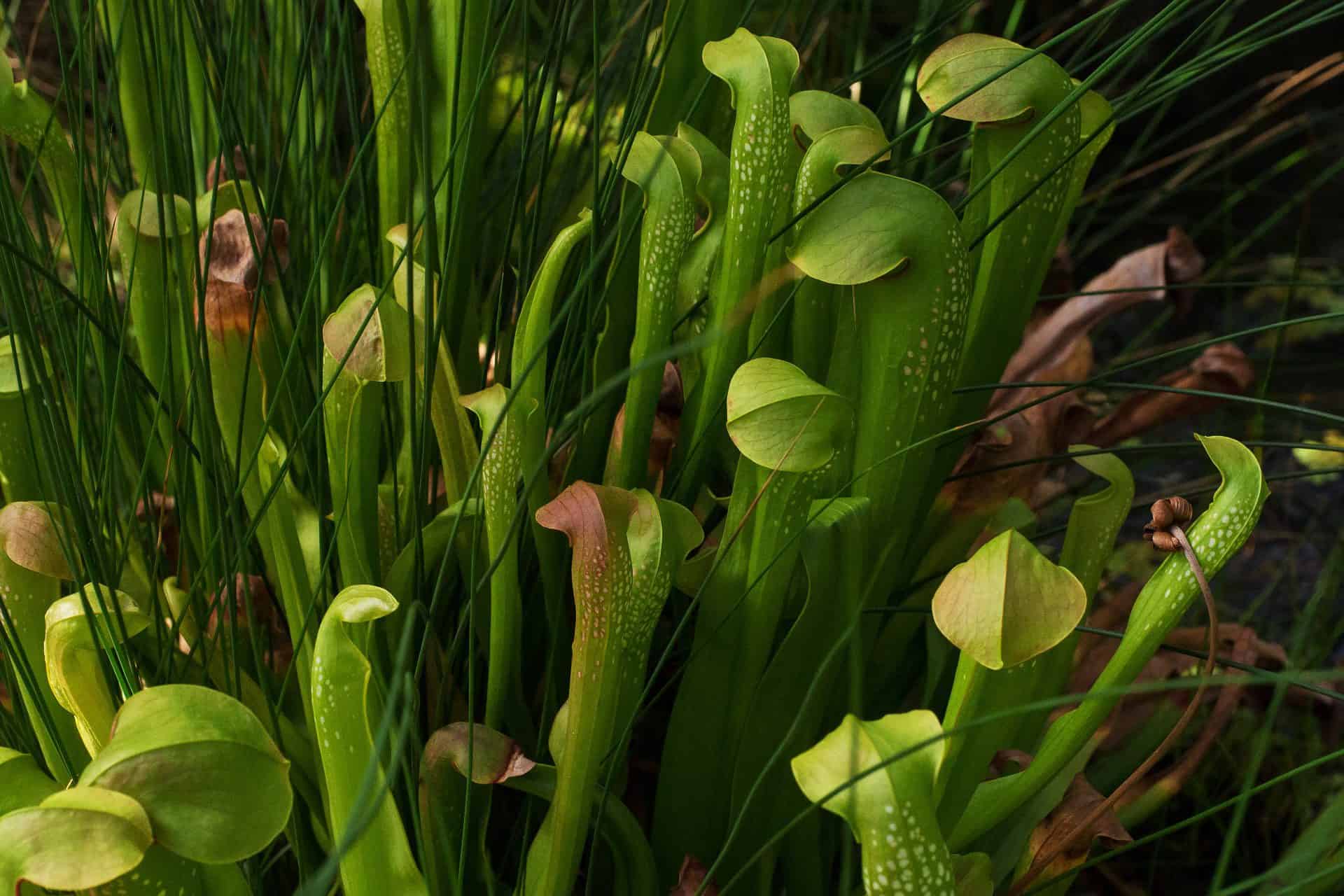No products in the cart.
Table of Contents
You are a beginner plant parent and brought home the purple pitcher plant. Still, you feel intimidated as you do not want to kill it. There is hope for you as we have the best care tips for this carnivorous plant.
So, grab a chair and let us help with how to grow purple pitcher plants with no fuss and only success.
More About Purple Pitcher Plant

Regarding carnivorous plant species, one name stands out: the Sarracenia purpurea. The plant commonly goes by the name pitcher plants or trumpet pitchers. Yet, you can grow them as houseplants to thrive for years.
Furthermore, the plant is an efficient flycatcher and relatively easy to grow. Eight bizarre to beautiful species of pitcher plants exist. Still, the purple pitcher plant is spectacular and sturdy in the tropical regions of North America.
The Northern pitcher plant belongs to the Sarraceniaceae family and grows in ponds, lakeside, and swamps. The pitcher plant Sarracenia purpurea thrives on smaller insects through their digestive fluid found in the pitchers.
The pitcher leaves catch insects and retain water; you can grow purple pitcher plants as indoor plants in your living space. Furthermore, mature pitcher plants can produce a single flower with a downward nodding head with yellowish pollen-bearing stamens.
Purple Pitcher Plant Care Tips
The purple pitcher is an average maintenance carnivorous plant outdoors with specific needs. Still, with some knowledge, it is easy to care for.
Best Soil

When grown indoors, the purple pitcher thrives in well-draining soil in shallow plastic pots with enough drain holes. To achieve the best results, mix one part peaty soil with one part lime-free horticultural sand and some sphagnum peat moss.
The pH value helps keep the soil at an acidic level between 3 and 5.
Lighting Needs

The purple pitcher plants are sun-loving plants that need full sunlight during the growing season. So, provide your plant with adequate sunlight in a bog garden or indoors. For your plant to properly form and develop, direct sun leads to healthy growth.
For inside the home, find a sunny spot at a south-facing window. Still, for the last resort, you can place your plant at the east or west-facing window, but it still needs direct sunlight for a few hours.
Watering
When buying pitcher plants, remember that they thrive in wet conditions in their natural habitats. Hence, it helps to simulate the same growing conditions indoors.
Compared to most other plants, the Sarracenia species need frequent watering, at least once or twice a day. Still, as with any houseplant, you should not leave the roots soggy, resulting in root rot.
The best is to check the soil daily and not let it dry out completely. We recommend using distilled water or rainwater where possible. If you need tap water, we recommend leaving it for a day or two, allowing the chemicals to evaporate.
It is essential to provide your plant with acidic water, so mineral or bottled water without limestone will not do as it has too many minerals. You should not use water from ponds or fish tanks as the nitrate concentration is too high.
The only time you reduce watering is resting during the cold months. Another essential note in growing your plant in plastic containers is remembering the drainage holes for escaping water to run freely from the pot.
Temperature and Humidity

While direct sunlight is essential to grow purple pitcher plants, it thrives in moderate to warm temperatures. The best temperature is between 50°F to 90°F. When it comes to humidity, your carnivorous plants thrive in high humidity levels.
So, it helps to mist your plant often or invest in a humidifier if you do not have a greenhouse.
Fertilizer
Your purple pitcher plant, Sarracenia purpurea, does not need feeding. The reason is that your plants get nutrients from common pests in the household.
Still, if your plants have nutrient-poor soil, you can add fertilizer like a slow-release feed three times a year to promote growth. We recommend a fertilizer used for bromeliads and orchids.
So, as with your other houseplants, you need not feed your pitcher plants during the growing seasons.
Winter Dormancy Period
The Northern pitcher plant needs a period known as the cold winter dormancy period between November and February. In the natural habitat of the purple pitcher plants, the temperatures dip below the zero point, and you need to provide your plant with a cold season.
You can place your plant in an unheated greenhouse to overwinter. But for indoor growing, it helps to put them in a colder area like a garage, shed, or next to a window. These plants are hardy, and the rhizomes can withstand frost.
Another notable thing during the dormancy process is the growth dying off, which turns black or looks tatty. You can remove the dead growth and leave your plant until spring arrives, but remember to keep watering and checking the soil.
Repotting

You seldom need to provide your purple pitcher plants with a larger container. A general rule is to transplant your exotic plant every two to three years to refresh the potting soil. These plants thrive on the lack of nutrients and in compost made for carnivorous plants.
Propagation
For the purple pitcher plant, you can propagate through seed from the pitchers or more efficiently use rhizome division. All you do is split the rhizome in half or smaller parts if you want more than one plant.
The best time to do this is early spring, as new growth appears. When splitting the roots, it helps to have a section with new leaves on them with some roots. Then, pot up some sphagnum moss with sand and peat moss to create a bog environment for your plant.
Care for your plants by ensuring the excess water runs freely and the soil is always moist.
Purple Pitcher Similar Plants
When you look at the Sarracenia genus, you can find similar plants to the purple pitcher, and the ones here are our favorites:
Sarracenia flava

The yellow pitcher plant is also a carnivorous plant that attracts insects. It is found from the East Coast to the South, West, and Northern Hemisphere. It thrives in full sun and has upright growth, displaying a yellow–green pitcher.
Sarracenia psittacina

The parrot pitcher plant has a narrow tube-curving green form with dark red to pale white blotches on the leaves. Its low rosette pitcher with a lateral opening attracts insects.
Sarracenia minor

The hooded pitcher is a smaller species with erect yellowish-green pitchers with a rounded hood.
Purple Pitcher Plant Diseases and Pests
While the pitcher plant Sarracenia purpurea is carnivorous, it still has its share of problems with insects and fungal attacks. These include thrips, mealybugs, root rot, aphids, and fungal molds. So, check out our Plant Pests and Pathogen Glossary to see how these critters look and how to remove them.
Frequently Asked Questions
As your purple pitcher plants age, they will start showing signs of browning or yellowing and normal. Still, it also depends on the pitcher plants you have. For example, Nepenthes will turn yellow from standing in too much sun, having heat stress, or the humidity being too low.
The main benefit of these carnivorous plants is that they eat insects keeping your living space pest free. Furthermore, pharmacies have used the plant for medicinal purposes to treat digestive disorders, urinary tract, and more.
The plant has no toxic effects reported, but as with most plants, if you notice any side effects from vomiting and more with your pets, we recommend taking them to the vet.
The purple pitcher is a new plant that made its way onto the botanical market and was found at some specialty nurseries online. But you need not hunt for this exotic plant as Plantly can provide you with one.
Whether you want to buy, sell or simply reach out to other plant enthusiasts, Plantly is the right place to be!


